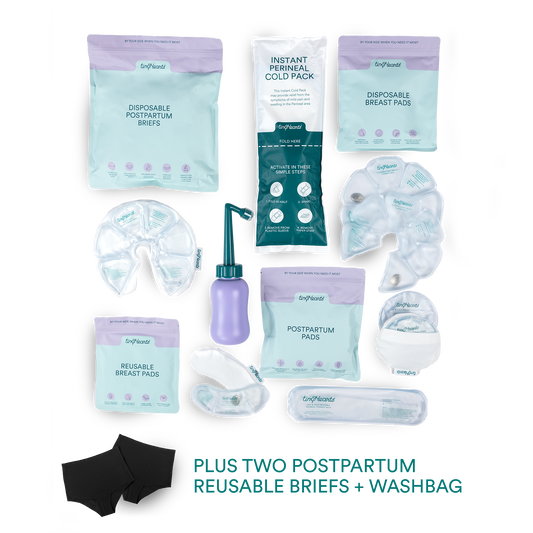At Tiny Hearts, we’re committed to keeping parents informed about all sorts of health and safety issues—even the ones that aren’t widely talked about. Recently, we’ve had a surprising number of parents reach out about ‘margarita burns,’ a skin reaction that can affect little ones when certain plants or fruits meet sunlight. Here’s everything you need to know about margarita burns, how to spot them, and ways to prevent this sneaky skin reaction.
What Is a Margarita Burn, and Why Does It Happen?
Margarita burns, or phytophotodermatitis, happen when a chemical called furocoumarin (found in some plants and fruits) comes into contact with the skin and is then exposed to sunlight. This reaction can lead to redness or blistering and may develop into dark pigmentation that lingers for weeks. The name ‘margarita burn’ comes from its common association with limes—think of squeezing a lime outdoors and then spending time in the sun.

How Common Are Margarita Burns in Australia?
Since Tiny Hearts shared information about Margarita Burns, I’ve been surprised by how many parents have reached out and shared their experiences with their little ones being affected. While official data on these burns is limited, it seems more common than people might think, especially with our beautiful Aussie sun and the way we enjoy citrus outdoors—like oranges or limes at a picnic. The frequency of these stories highlights how important it is to be aware, even if we don’t hear about these types of burns often.
Foods and Plants That Can Cause Margarita Burns
Limes aren’t the only culprits; other citrus fruits and plants can also cause margarita burns when combined with sunlight. Some common ones include:
- Limes
- Lemons
- Oranges
- Mandarins
- Grapefruit
- Bergamot
Knowing which foods can cause this reaction can help you avoid accidental exposure when outdoors with little ones.
Signs and Symptoms of a Margarita Burns?
Symptoms typically appear within 24 hours of exposure and tend to peak around 2-3 days later. The burns often appear in streaks or patches where the juice touched the skin, which can make them easier to identify as a margarita burn.
The symptoms of a margarita burn range from mild to severe and can often resemble a sunburn. Some common signs include:
- Skin inflammation
- Redness
- Discolouration, often darkening over time
- Burning sensation
- Pain and itching
- Blistering
- Peeling or skin loss
What Should You Do if Your Child Suffers This Kind of Burn?
If your child experiences a margarita burn, it’s essential to take the right steps for comfort and care:
- Cold Compress: Apply a cool, damp cloth to the area to relieve pain.
- Pain Relief: Use age-appropriate pain medication if needed
- Dress the Area: If there are blisters, keep the area clean and consider covering it with a sterile dressing.
- See a Doctor: Any little one with a margarita burn should be seen by a doctor. Since symptoms often appear a day or two after exposure, it’s important to provide a detailed history of recent activities. Parents often forget about the oranges or limes they handled outdoors, which can delay diagnosis and treatment.
- A doctor may prescribe topical steroids to reduce inflammation and itching and topical antiseptics to prevent infection, especially if there’s blistering. Moisturisers may also be recommended to soothe and protect the skin during healing. Early diagnosis and treatment can make a big difference in managing symptoms and supporting quicker recovery.
Do Margarita Burns Cause Permanent Scarring?
Margarita burns generally don’t lead to permanent scarring, but they can leave post-inflammatory hyperpigmentation—dark patches on the skin that can last for weeks or even months. To minimise the risk of lasting marks, practice proper aftercare, keep the skin moisturised, and ensure sun protection.
How Can You Prevent Margarita Burns?
The best way to prevent phytophotodermatitis is to:
- Wash off citrus juice or oil from the skin as soon as possible.
- Avoid touching others after handling citrus fruits to prevent accidental transfer.
- Limit sun exposure after handling citrus fruits or other reactive plants.
- Take sun protection measures, like applying sunscreen or covering skin with protective clothing.
- These steps are especially important when spending time outdoors, where sun exposure is likely.
Are Margarita Burns Only an Issue in the Summer?
Margarita burns can happen any time of year. Although UV rays are stronger in summer, even moderate sunlight in other seasons can activate these chemicals on the skin. A UV index of 3 or higher can be enough to trigger a reaction, so it’s wise to take precautions year-round.
Helping You, Help Your Little One
With a bit of awareness, we can protect our little ones from the unexpected discomfort of a margarita burn. By understanding the cause and knowing what to do, you can enjoy those sunny outdoor moments with your family safely.







